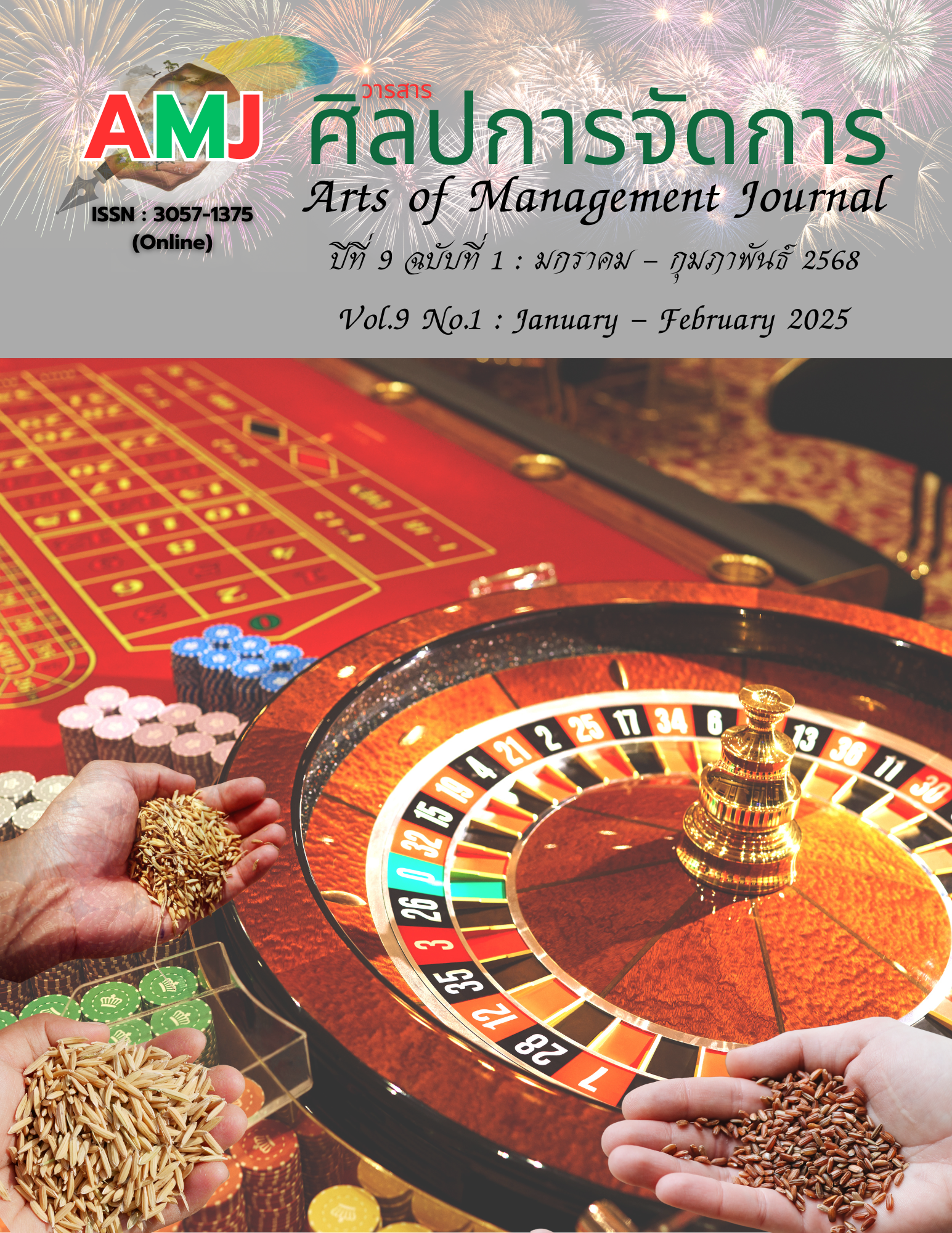การพัฒนาหลักสูตรฐานสมรรถนะการก่อสร้างเรือนไทยภาคกลาง ในระดับประกาศนียบัตรวิชาชีพ
Main Article Content
บทคัดย่อ
การวิจัยครั้งนี้มุ่งเน้นการพัฒนาหลักสูตรฐานสมรรถนะการก่อสร้างเรือนไทยภาคกลางในระดับประกาศนียบัตรวิชาชีพ โดยมีวัตถุประสงค์เพื่อ 1) ศึกษาสมรรถนะการก่อสร้างเรือนไทยภาคกลางในระดับประกาศนียบัตรวิชาชีพ 2) พัฒนาหลักสูตรฐานสมรรถนะการก่อสร้างเรือนไทยภาคกลางในระดับประกาศนียบัตรวิชาชีพ การวิจัยแบ่งเป็น 2 ระยะ ในระยะที่ 1 มีการแบ่งระยะย่อยคือ ระยะ 1.1 ศึกษาความเป็นไปได้ของการดำเนินการของหลักสูตรฐานสมรรถนะ ด้วยแบบสอบถามต่อผู้บริหารสถานศึกษา และครู วิเคราะห์ข้อมูลโดยใช้สถิติ ร้อยละ ค่าเฉลี่ย ค่าเบี่ยงเบนมาตรฐาน ระยะ 1.2 ศึกษาสมรรถนะ ด้วยวิธีเดลฟาย จำนวน 17 คน ที่เป็นการเลือกแบบเจาะจง วิเคราะห์ข้อมูลโดยใช้สถิติ ค่ามัธยฐาน และค่าพิสัยระหว่างควอไทล์ และระยะที่ 2 พัฒนาหลักสูตรฐานสมรรถนะการก่อสร้างเรือนไทยภาคกลางในระดับประกาศนียบัตรวิชาชีพ ใช้วิธีการสนทนากลุ่ม ต่อผู้ทรงคุณวุฒิ จำนวน 7 คน เป็นการเลือกแบบเจาะจง และวิเคราะห์ข้อมูลด้วยการวิเคราะห์เนื้อหา
ผลการวิจัยพบว่าหลักสูตรฐานสมรรถนะการก่อสร้างเรือนไทยภาคกลางในระดับประกาศนียบัตรวิชาชีพ บรรจุในประเภทช่างเทคนิคสถาปัตยกรรม ส่วนสมรรถนะแบ่งออกเป็น 3 ด้าน ประกอบด้วย ด้านความรู้ จำนวน 14 สมรรถนะ ด้านทักษะ จำนวน 12 สมรรถนะ และด้านเจตคติ จำนวน 9 สมรรถนะ และจากการสนทนากลุ่ม ได้หลักสูตรระยะสั้น ประกอบด้วย 3 โมดูล ดังนี้ 1) การออกแบบเขียนแบบเรือนไทยภาคกลาง 2) การผลิตชิ้นงาน วัสดุและวิธีการก่อสร้างเรือนไทยภาคกลาง 3) อุปกรณ์อาคาร การบำรุงรักษาอาคาร กฎหมาย อาชีวอนามัยในเรือนไทยภาคกลางซึ่งสามารถนำไปใช้ในหลักสูตรการเรียนการสอนในระดับประกาศนียบัตรวิชาชีพได้
Article Details

This work is licensed under a Creative Commons Attribution-NonCommercial-NoDerivatives 4.0 International License.
ทัศนะและความคิดเห็นที่ปรากฏในบทความในวารสารศิลปการจัดการ ถือเป็นความรับผิดชอบของผู้เขียนบทความนั้น และไม่ถือเป็นทัศนะและความรับผิดชอบของกองบรรณาธิการ ยินยอมว่าบทความเป็นลิขสิทธิ์ของวารสารศิลปการจัดการ
References
Bloom, B. S., Madaus, G. F., & Hastings, J. T. (1971). Handbook on formative and summative evaluation of student learning. McGraw-Hill.
Boyatzis. R.E. (1982). Organization behavioral. (7th ed.). McGraw-Hill.
Bryant, J., & Poustie, K. (2001). Competencies needed by public library staff. Bertelsmann Foundation.
Chandrakasem Rajabhat University. (2023). Manual for preparing the curriculum of module courses and non-degree courses. Office of Academic Promotion and Registration.
Chitranukroh, J. (2007). The analysis of essential factors in traditional Thai house technology: Central Thailand[Doctoral dissertation, Chulalongkorn University].
Council of Architects. (2022). Architectural professional practice control. https://www.act.or.th/th/home/post.php?type=1&p=29
Jaijongrak, R. (2000). Traditional Thai house (3rd ed.). Thammasat University.
McClelland, D. C. (1973). Testing for competence rather than intelligence. American Psychologist.
Meesil, N. (2016). Delphi research: avoiding misconceptions. Veridian E-Journal, Silpakorn University, 9(1), 1256-1267. https://he02.tci-thaijo.org/index.php/Veridian-E-Journal/article/view/61679
Ngamman, R. (2019, April 27, 2019). Suwannaram Worawihan Temple Hall. Thai Post.
Office of Vocational Education and Professional Standards, Office of the Vocational Education Commission, Ministry of Education, Thailand. (2019). Vocational education management. https://bsq.vec.go.th/Portals/9/document/Course%20criteria/1.pdf
Office of the Vocational Education Commission, Ministry of Education, Thailand. (2024). Vocational certificate curriculum, B.E. 2567 (2024). https://bsq.vec.go.th/
Phirom, S. (1982). Central Thai house. Teachers’ Council of Thailand.
Phramaha Udorn Uttaro (Makdee)., Phrakhrusrisutamniwit (Sukachoto Sukchaem)., Phrakhrusiriphurinithat (Thitasaggo Ditsawan)., & Phrakhrubaidika Monthon Khamago (Chutosri). (2022). Guidelines for the development of competency-based curriculum and
student teaching management. Journal of Educational Review Faculty of Education in MCU, 9(1), 438-451. https://so02.tci-thaijo.org/index.php/EDMCU/article/view/255074
Phromma, C. et al. (2006). The model of community enterprise network management for sustainable self-reliance. Office of the Higher Education Commission.
Saylor, J.G., Alexander, W.M., & Lewis, A.J. (1981). Curriculum planning for better teaching and learning. Holt, Rinehart and Winston.
Silpcharu, T. (2014). Research and statistical data analysis with SPSS and AMOS (15th ed.). S.R. Printing Mass Production.
Siwasariyanon, C. (2001). Basic Thai architecture for technicians (13th ed.). Technology Promotion Association (Thai-Japan).
Spencer, L. M. (1993). Competence at work models for superior performance. Wiley.
Suwannakiri, P. (1982). The sapling house (4th ed.). Aksorn Charoentat.
TESDA. (2006). The Philippine qualification framework. Republic of the Philippines.
Thichinphong, A. (2004). Thai style decoration (7th ed.). Baanlaesuan.
Thonsongaroch, P. (2012). The form and components of traditional Thai houses in the central region that have changed in the present[Doctoral dissertation, Kasetsart University].
Wongwanich, S. (2015). Needs assessment research. Chulalongkorn University.

